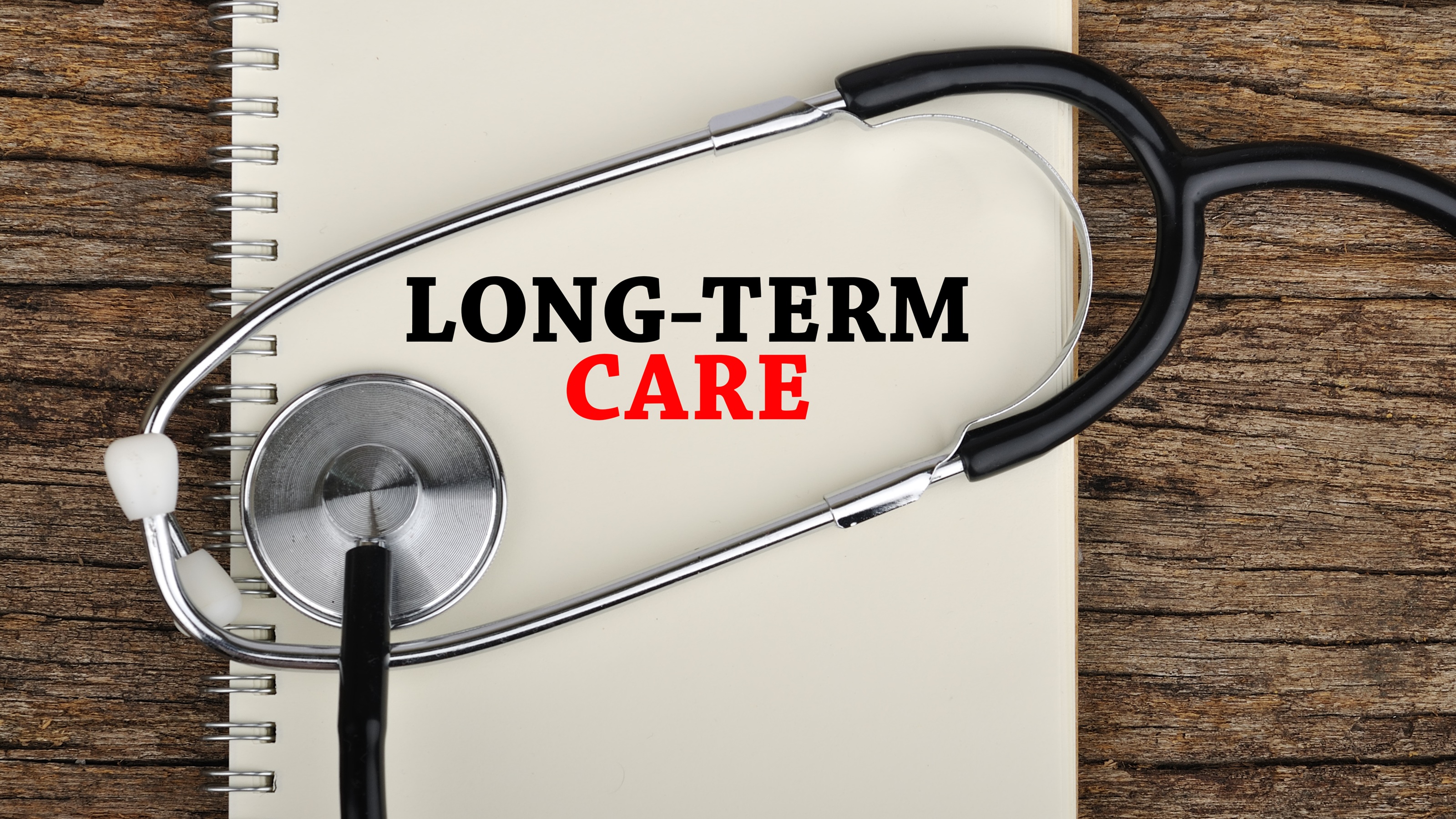Life Insurance: Beyond Just Estate Planning
When it comes to life insurance, many folks don't think they need it, if they consider it at all. In fact, it's a versatile financial tool that can help to build financial wellness now and for the future.

If you’ve never said, “I do,” or live on your own and don’t have any children, you probably think you don’t need life insurance.
Most people may not realize that life insurance can provide benefits well beyond paying for funeral expenses. You’ll want to consider life insurance if someone depends on your income for any number of reasons. That, of course, includes providing for children, but you could also use it to ensure your debts are paid or that loved ones receive the care they need.
No matter your personal circumstances, chances are you haven’t yet put life insurance to work for you. According to LIMRA, a financial services research and consulting organization, only 59% of Americans have life insurance, and about half of those are underinsured.

Sign up for Kiplinger’s Free E-Newsletters
Profit and prosper with the best of expert advice on investing, taxes, retirement, personal finance and more - straight to your e-mail.
Profit and prosper with the best of expert advice - straight to your e-mail.
Beyond just estate planning, life insurance continues to be a versatile cornerstone of financial planning strategies, offering everything from potential retirement income to policies that offer investment value. Here are six ways to use life insurance:
Provide money to help the people you love
In its most basic form, when you die, life insurance provides a sum of money to people you care for. You may want to use the death benefit for final expenses or to pay off a mortgage. Even in your 20s, you might want to think about life insurance if you’ve co-signed a student loan with your parents or others, so that your debt doesn’t become their financial burden. Or you may want to make sure there’s enough money for your children’s education or parents’ long-term care, for example.
For these kinds of goals, many people turn to term life insurance, which provides protection for a specific amount of time, typically from 10 to 30 years. So, if something happens to you during that time, your beneficiaries will receive a payment from the policy.
Create another source of retirement income
If you’re looking for a way to supplement your retirement income, a permanent life insurance policy — like whole life or universal life — might do the trick. Essentially, permanent life insurance allows you to use the policy to accumulate cash value, which is especially useful if you’ve maxed out your 401(k) or have too much income to contribute to a Roth IRA or make a deductible contribution to a traditional IRA. You can use that cash value any way you want — for yourself, to pay for a child or grandchild’s wedding or to cover an unexpected expense.
You can also take tax-free loans from the cash value of your permanent policy, giving you access to cash for any use or emergency you may have. You do have to pay interest, which can range from 5% to 9%, according to current information from Bankrate.com. Still, most loans have lower rates than a bank or credit card loan and they don’t impact your credit score. And while you don’t have to pay it back because the loan could be deducted from your death benefit, you do need to be sure the interest gets paid. Otherwise, your policy could lapse if the loan plus interest exceeds your policy’s cash value over time. It’s also important to understand that unpaid loans and withdrawals will reduce policy cash values and death benefits and may have tax consequences. If your policy does lapse with an outstanding loan, the gain in the policy becomes immediately taxable.
There is also a limit to how much you can put into a life insurance policy to take advantage of this strategy. Over certain funding limits, the policy becomes classified as a Modified Endowment Contract (MEC), which has fewer tax perks. This means your first withdrawal from the policy — even if it’s a loan — is considered taxable income. On MECs, there’s also a 10% tax penalty if you take a distribution prior to age 59½.
Have access to money in case you get sick
With longer life expectancies, people rightly worry about the costs of chronic care. According to a study published in The American Journal of Medicine in 2018, more than 42% of 9.5 million diagnosed with cancer from 2000 to 2012 drained their life’s assets in two years. In the case of a disease like cancer or other qualifying illness, some permanent life insurance policies offer options called riders that, for an additional cost, allow you to use a portion of your death benefit while you’re still living to pay the costs associated with a terminal or chronic illness.
It’s important to understand these types of riders have specific definitions for a chronic illness that need to be met in order to qualify for benefits. Note that these accelerated benefits don’t provide an adequate substitute for long-term care or disability insurance, but are supplemental. Accelerated benefits are also often counted as income when it comes to determining Medicaid benefits.
Finally, long-term care benefits, by definition, only cover costs associated with specific care provided. Life insurance riders that offer living benefits usually do not have limits on how you can use your benefits, whether you need to make accommodations at home, buy groceries, or pay travel expenses for visiting family. However, using these benefits may reduce or eliminate the amount your beneficiaries receive.
Protect your business and business partners
If you own a business, you not only care for your family, but you also care for any business partners and employees. If something happens to you, a partner or a key employee, you can ensure there’s as little impact to the business as possible. Among other things, life insurance can be used to facilitate the transfer of business ownership, fund nonqualified retirement plans and keep a business going during any transition after the death of an owner or key employee.
Leave a legacy
You want to leave a meaningful amount of money to people you love and causes you care about — all while minimizing taxes. Many planning strategies use a part of the death benefit from a life insurance policy as a funding source to pay any taxes due on an estate. Typically, your beneficiaries won’t have to pay any taxes on the money they receive from your life insurance policy (per IRC 101(1)(a)). This benefit can also provide a meaningful donation to a charity or organization you care about, as well as loved ones.
Keep the tax bill down to leave more for your beneficiaries
If you’re wealthy, you can give your heirs a bigger gift after a smaller estate tax bill by creating an irrevocable living trust that owns your life insurance and holds death benefits for those named in the trust to receive the money. The federal gift and estate tax threshold is pretty high—$11.4 million per person in 2019 (or $22.8 million for a married couple) — but some states collect taxes on much smaller estates (See 9 States with the Scariest Death Taxes) and your heirs may benefit from tax-planning strategies using life insurance.
Some people may be at a stage in life where life insurance doesn’t seem necessary. You may have accumulated enough assets, savings and income to cover anticipated expenses, including at the end of life. Your children may be self-sufficient adults and don’t need an insurance payout to protect them from financial difficulties. You also likely don’t need life insurance if your estate is too small to owe estate taxes or has enough liquidity to cover them.
But when it comes to life insurance for the rest of us, too many folks don’t think they need it — until they do — and a key element of building financial wellness is ensuring financial protection for the people you care about most. In fact, 59% of Americans say one of their top financial priorities is ensuring they can maintain a standard of living for their family and loved ones, yet only 57% are confident they can reach that goal, according to Prudential’s 2018 Financial Wellness Census.
Life insurance can provide value across all income levels, and far beyond a simple death benefit. Whether term or permanent, it can help to build your own financial wellness and a financial foundation for those you care about.
1026240-00001-00
Profit and prosper with the best of Kiplinger's advice on investing, taxes, retirement, personal finance and much more. Delivered daily. Enter your email in the box and click Sign Me Up.

Salene Hitchcock-Gear is president of Prudential Individual Life Insurance, a business unit of Prudential that offers competitive solutions to meet the needs of consumers through the manufacturing and distribution of a diverse portfolio of life insurance products. An insurance industry veteran with more than 30 years of experience, Hitchcock-Gear joined Prudential in 2017 as chief operating officer of Prudential Advisors, the Company’s national sales organization with more than 3,000 financial professionals, advisors and fee-based financial planners who offer clients a broad range of financial solutions. She became president of the Individual Life Insurance business in 2018.
-
 Stock Market Today: Stocks Slip Ahead of Big Earnings, Inflation Week
Stock Market Today: Stocks Slip Ahead of Big Earnings, Inflation WeekPerhaps uncertainty about tariffs, inflation, interest rates and economic growth can only be answered with earnings.
-
 Ask the Editor — Tax Questions on "The One Big Beautiful Bill Act"
Ask the Editor — Tax Questions on "The One Big Beautiful Bill Act"Ask the Editor In this week's Ask the Editor Q&A, we answer tax questions from readers on the new tax law.
-
 I'm a Financial Planner: Here Are Some Long-Term Care Insurance Tips for Every Age
I'm a Financial Planner: Here Are Some Long-Term Care Insurance Tips for Every AgeStrategies include adding riders to life insurance for younger individuals and considering hybrid or traditional long-term care policies for those in their mid-50s and 60s.
-
 Engineering Reliable Retirement Income in 2025: An Expert Guide
Engineering Reliable Retirement Income in 2025: An Expert GuideFor dependable income, consider using a bucket strategy and annuities in tandem to promote structure, flexibility and peace of mind.
-
 Crazy Markets Shouldn't Derail Your Retirement if You Follow This Financial Pro's Plan
Crazy Markets Shouldn't Derail Your Retirement if You Follow This Financial Pro's PlanBeing nervous about retiring in a volatile market is a red flag that you're relying too heavily on your investment portfolio, rather than a comprehensive plan.
-
 Key to Financial Peace of Mind: Think 'What's Next?' Rather Than 'What If?'
Key to Financial Peace of Mind: Think 'What's Next?' Rather Than 'What If?'Even if you've hit your magic number for retirement, it's hard to stop worrying about money. Giving it a clear purpose is one way to reduce financial anxiety.
-
 Three Estate Planning Documents a Business Owner Can't Afford to Skip
Three Estate Planning Documents a Business Owner Can't Afford to SkipA business owner's estate plan should protect the company and its employees as well as the entrepreneur's heirs. These three documents are critical.
-
 Financial Fact vs Fiction: Why Your 'Magic Number' Isn't Actually Magical
Financial Fact vs Fiction: Why Your 'Magic Number' Isn't Actually MagicalDo you think you're diversified if you're invested in the S&P 500 and Nasdaq? Do you think your tax rate will fall in retirement? Think again — and read on for other myths that could be leading you astray.
-
 Opportunity Zones: An Expert Guide to the Changes in the One Big Beautiful Bill
Opportunity Zones: An Expert Guide to the Changes in the One Big Beautiful BillThe law makes opportunity zones permanent, creates enhanced tax benefits for rural investments and opens up new strategies for investors to combine community development with significant tax advantages.
-
 Five Ways Retirees Can Keep Perspective Through Market Jitters
Five Ways Retirees Can Keep Perspective Through Market JittersMarket volatility is a recurring event with historical precedents (the dot-com bubble, global financial crisis and pandemic), each followed by recovery. Here's how people who are near or in retirement can navigate economic uncertainty.
